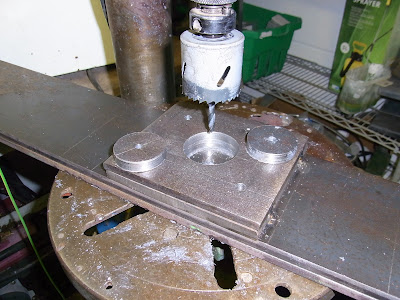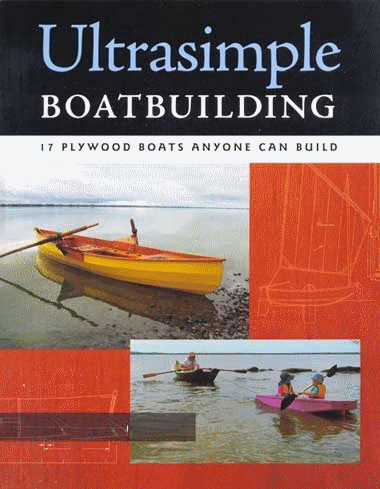 |
| Katz restored Cobra |
 |
| Bird enjoying the Lake Dora Show |
Show season is seriously underway. Two days to Tavares, Florida, three days of show and two days home. When we get home, it turns out, we really werent gone for very long. But, the whirlwind of travel, of seeing faces that we know well, but only from this distant show, of seeing faces that we know from almost everywhere that we travel to, of meeting new faces and of spending time with friends and family who are in this distant place, make it seem like weve been away for ages.
 |
| Flying Saucer FiberClassic |
Its been about eighteen years since we started this annual journey to Lake Dora where the Sunnyland Chapter of The Antique & Classic Boat Society hold one of the great shows among antique and classic boat shows. Its a given that we will be there next year; “first space to the right of the entrance”.
 |
| First booth to the right of the entrance |
 |
| The Chesapeake Bay Bridge Tunnel is 20 Miles Long! |
The drive is as intense as the show, considering that we spend more time in the car than we do in our booth. Route 95, although perhaps a bit faster, doesnt interest us as much as taking those roads that have mom & pop motels, local eateries, farms, houses, and reveal local cultures and industries.
 |
| Incredible O.J. Citra, Florida |
You cant really see anything from Route 95 and with a good map, and especially with GPS, its hard to get lost anymore. For the most part, these are also 60 mph roads and I dont think that they cost us anything in terms of time.
?
 |
| The Real Callabash, N.C. |
Just as we see familiar faces at the show, there are familiar landmarks along the roads; architecturally interesting old houses and buildings, towns that still hold their character, and because we are on the cusp of Spring, places where the season is much further along or farther behind.
 |
| Tara, once upon a time??? |
As Ive said before, this is where we find the great Barbecue and Seafood restaurants that we like so much.
 |
| Santee, S.C. at sunset |
 |
| Swan Pair by Ed Kuhn |
This year, we may as well not have gotten out of the car. We arrived home late on Tuesday night. Friday morning (tomorrow) we leave for Chincoteague, Virginia. Its the Easter show down there, with a totally different set of familiar faces. Weve known them for a lot of years, as well. The ratio of drive time to show time is a bit different. Two hours of driving (each way) and two days of show: Friday and Saturday.
The Chincoteague Easter Show is not about boats; its about birds (although there are a few of us that make model boats too). Some of the best carvers in the country come to this show. There are also other types of artists who are truly outstanding in what they do. Were looking forward to spending time with Mary Lou Troutman, Ed Kuhn, Bill Veasey, Shannon Dimmig, Don and Donna Drew, Grover Cantwell, Russ Fish, Bill Hickson, Rocky Detwiler, Donnie Thornton,Bill Cowen, Denise Bennett, Joan Devaney, Nancy Richards West and many, many more great people. I definitely recommend this show and you have to know that its pretty special for us to look forward to it after the intense trip to Florida. Here is the show website: http://www.chincoteaguedecoyshow.com/
 |
| At the 2012 Easter Show |
Actually, the Chincoteague Easter show is about the arts and like an ACBS show is centered around boats, so is this show centered around birds. Its really worth the trip from wherever you are. It will be good to have a couple of weeks without travel before our next show: The Bay Bridge Boat Show. That will be another story... At least this year, we dont have to drive to New York on Easter Sunday to put a large half-hull on the wall like we did last year.
See you at the Show!

















 There comes a time when the pressure builds and you just gotta do something that you have put off too long....like putting drain plugs in a boat. The thought of drilling big holes in the transom scared the heck out of me, but I couldnt put it off any longer. After contemplating and procrastinating, I reviewed the cross-section of the transom to determine the lowest point in the transom I could drill a perpendicular hole and not breach the plywood bottom planking. I also looked at photos on this blog to see where I had located screws to hold on the bottom planking near the keel as I did not want to drill into one.
There comes a time when the pressure builds and you just gotta do something that you have put off too long....like putting drain plugs in a boat. The thought of drilling big holes in the transom scared the heck out of me, but I couldnt put it off any longer. After contemplating and procrastinating, I reviewed the cross-section of the transom to determine the lowest point in the transom I could drill a perpendicular hole and not breach the plywood bottom planking. I also looked at photos on this blog to see where I had located screws to hold on the bottom planking near the keel as I did not want to drill into one.
 The first hole when well, and then I moved to the other side of the keel and located the hole and drilled another pilot hole in the 2x6 in the right location. The pictures show the second hole about to be drilled.
The first hole when well, and then I moved to the other side of the keel and located the hole and drilled another pilot hole in the 2x6 in the right location. The pictures show the second hole about to be drilled. 





























